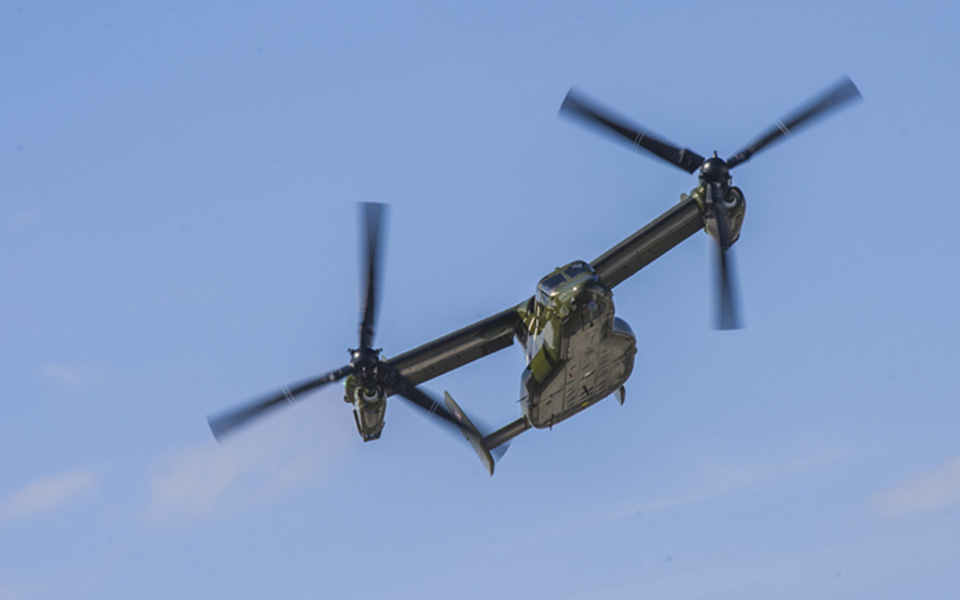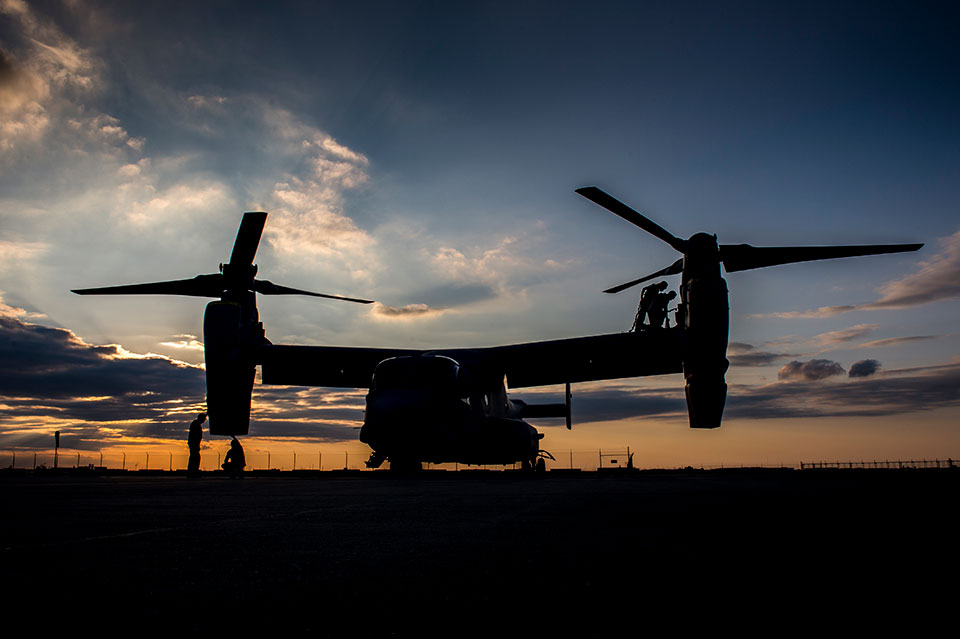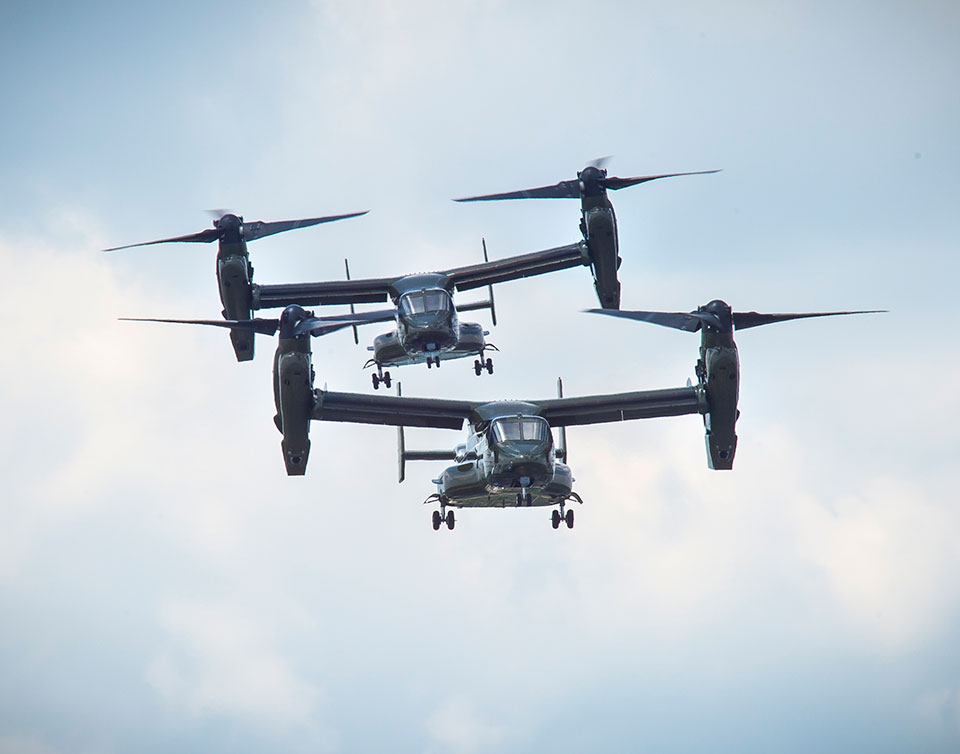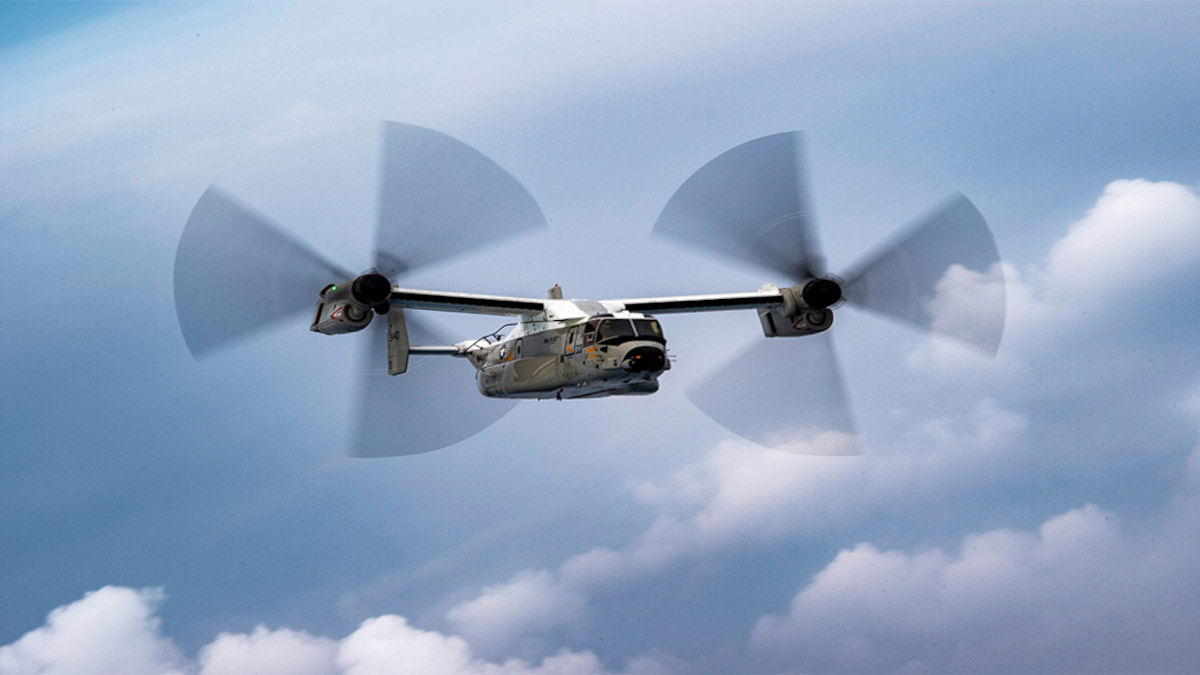Table of Contents
- Introduction to the CV-22 Osprey and Its Mission
- The Impact of the 2023 Fatal Crash in Japan
- The Path to Operational Readiness
- New Safety Procedures for the Osprey Fleet
- Deployment Strategy and Geographic Focus
- The MV-22 Engine Fire at Fairchild AFB
- The Future of Osprey Operations and Safety Assurance
- Conclusion
1. Introduction to the CV-22 Osprey and Its Mission
The CV-22 Osprey plays a critical role in modern military operations. Designed for special operations, this tiltrotor aircraft combines the capabilities of a helicopter and a fixed-wing aircraft. Its unique design allows for vertical takeoff and landing, alongside the speed and range of traditional airplanes.
This dual capability enables rapid deployment into remote and challenging environments, making it an essential asset for missions like personnel recovery, medical evacuation, and direct action raids.
As part of the U.S. Air Force’s Special Operations Command (AFSOC), the Osprey supports strategic objectives worldwide. However, the CV-22’s path has encountered challenges, including recent accidents that highlighted the need for safety reforms and operational adjustments.

2. The Impact of the 2023 Fatal Crash in Japan
The fatal crash in Japan in November 2023 became a significant event in the Osprey’s operational history. The crash led to intense scrutiny, both from military leadership and external observers. Investigations revealed the cause to be a catastrophic failure in the left-hand proprotor gearbox. A cascade of technical malfunctions ensued, resulting in the aircraft’s crash and tragic loss of life.
This event prompted questions regarding the Osprey’s reliability and future. As the military sought to uncover what went wrong, it became clear that deeper changes were necessary to ensure the safety of the aircrews and the reliability of the Osprey.
3. The Path to Operational Readiness
Despite the setbacks, AFSOC began a phased return to flight operations in May 2024. By this point, the Osprey fleet faced restrictions on its range and areas of operation. The CV-22s operated within 30 minutes of a safe landing zone, a restriction that remains in place for future missions.
While these limitations could hinder certain mission types, they are seen as a temporary measure. Commanders and mission planners have adjusted to this constraint, viewing it as a necessary precaution while they fine-tune the operational readiness of the aircraft.
According to Lt. Gen. Michael E. Conley, head of AFSOC, about 60% of the fleet is now operational. The remaining aircraft are expected to return to full operational capacity by late 2024 or early 2025. Crews have undertaken rigorous training to prepare for real-world operations, focusing on safety and precision in every mission.

4. New Safety Procedures for the Osprey Fleet
Following the Japan crash, safety became a top priority. Investigators pointed to the crew’s handling of multiple proprotor gearbox warnings before the failure. At the time of the crash, crews followed a checklist that instructed them to continue flying after three warnings, but land immediately after the fourth.
This procedure has now changed. The new guidance calls for crews to land after one chip burn warning and requires immediate landing after two warnings. This revision creates clearer and stricter guidelines for aircrews, reducing ambiguity during critical flight situations.
Lt. Gen. Conley explained the rationale behind this shift, emphasizing the importance of decisive action during emergencies. He acknowledged that while discretion remains with the aircraft commander, the new guidance tightens safety protocols to ensure quicker responses to potential failures.
The lessons learned from the Japan crash have influenced Osprey operations across the fleet. Conley’s emphasis on safety reflects a broader culture shift within AFSOC, where operational effectiveness and crew protection go hand in hand.
5. Deployment Strategy and Geographic Focus
AFSOC is preparing for the first CV-22 deployment since the 2023 crash. Although specific details have not been disclosed, Conley indicated the deployment will occur within weeks. The CV-22s will head to regions outside the Indo-Pacific and European theaters, which already house permanent CV-22 squadrons at Yokota Air Base in Japan and RAF Mildenhall in the UK.
This decision aligns with the strategic need to distribute operational assets across multiple regions, ensuring that geographic combatant commanders have access to the Osprey’s unique capabilities. This deployment will test the fleet’s operational readiness in real-world combat scenarios, while also reinforcing the Osprey’s role in global special operations missions.
Conley’s remarks underscore confidence in the Osprey’s ability to perform in high-risk environments. While the aircraft’s entire fleet is still on the path to full readiness, AFSOC has enough capacity and trained personnel to meet current mission demands.

6. The MV-22 Engine Fire at Fairchild AFB
Around the time of the CV-22 deployment announcement, an MV-22 Osprey belonging to the U.S. Marine Corps experienced an engine fire at Fairchild Air Force Base in Washington. Photos showed fire crews responding to the emergency, with one aircraft covered in foam after the fire was extinguished.
Fortunately, no one was injured, and the fire caused no major damage. However, the incident prompted a quick response and raised concerns about the reliability of the Osprey. The investigation is ongoing, with officials working to determine the cause of the fire.
While this incident does not involve the Air Force’s CV-22, it adds to the broader scrutiny surrounding the V-22 Osprey series. Incidents like these, though rare, highlight the inherent risks associated with complex aircraft systems.
7. The Future of Osprey Operations and Safety Assurance
The future of the CV-22 Osprey depends on its ability to adapt and overcome the safety challenges of recent years. The fatal crashes, including the one in Japan, have cast a shadow over the program. Military leaders like Lt. Gen. Conley are committed to ensuring the safety of the aircrews and restoring confidence in the Osprey.
Conley’s personal experiences during the investigation into the Japan crash deeply influenced his approach to safety reforms. Meeting with the families of those lost in the crash left a lasting impact on him. Their grief and resilience reinforced his commitment to delivering a safer aircraft.
Conley’s leadership reflects a broader shift in AFSOC’s culture, where safety now drives operational decisions. A deliberate, safety-conscious approach to flight operations guides the Osprey’s future. This is evident in the fleet’s phased return to service and the revised safety protocols implemented across the board.

8. Conclusion
The CV-22 Osprey stands at a crossroads. Following the 2023 crash in Japan, military leaders and aircrews face the challenge of ensuring the aircraft’s safety and operational readiness. New safety protocols, rigorous training, and careful mission planning offer hope that the Osprey can continue to serve effectively in special operations missions.
The upcoming deployment marks a critical test of the CV-22’s capabilities. It will demonstrate the progress made since the crash and highlight the aircraft’s role in global military strategy. The continued focus on safety, both in the air and on the ground, ensures that future operations will prioritize the protection of aircrews and the success of their missions.
AFSOC’s commitment to the Osprey program remains strong. Leaders like Lt. Gen. Conley have shown that safety and mission effectiveness go hand in hand. As the Osprey fleet returns to full operational capacity, it will face the challenges of real-world deployment, with the lessons of the past guiding its future trajectory.




































